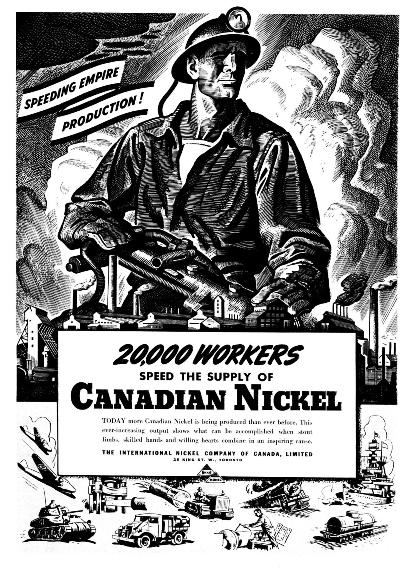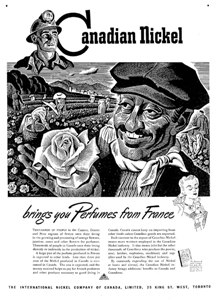
In its furnaces every day a mountain of ore becomes a river of vital metals; On its streets a colorful mixture of races and religions surges and blends into a unique Canadian scene. Sudbury’s got a right to thump its hairy chest
A fragile, albeit glamorous and hard-knuckled, creature is the mine town. Today, ebullient with life, optimism and grand schemes for the future; tomorrow, perhaps a ghost town populated by a bewildered few left to flounder in the backwash made by rugged individualists hastening to other fields of fortune.
But, by every token in the book, there’s one Canadian mine town now a full-scale city of 47,000 that’s not destined to become a haunted has-been of yesteryear. In its case the reverse seems likely. Many persons believe it’s slated to become the Canadian facsimile of Pittsburgh.
The city is Sudbury, the hustling, bustling hub of a rock-strewn territory which is not only the most richly mineralized area of Canada but of the entire western hemisphere. No spectre of ghostdom haunts blatantly prosperous Sudbury.

























 This brave New World of ours may be bringing the world-order architects down with the jitters, but no one is going to convince Mr. and Mrs. Job Public that it doesn’t have the gaudiest surface glitter they have ever seen.
This brave New World of ours may be bringing the world-order architects down with the jitters, but no one is going to convince Mr. and Mrs. Job Public that it doesn’t have the gaudiest surface glitter they have ever seen.